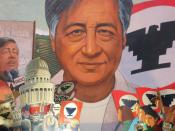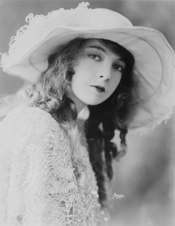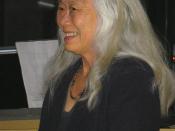The final chapter of Maxine Kingston's amazing book, The Woman Warrior, is an anthem to voice and silence. The entire chapter focuses on Maxine trying to find her own individual voice and niche in society. At an early age, Kingston was always picked last, didn't fit in with her classmates who were allowed to participate in plays, and failed kindergarten. All of these abnormalities can be attributed to Maxine's inability to find her own identity and voice. She even states herself that she tries to be quiet and "American-feminine," and further masks her nearly non-existent "duck voice" in order to try to fit into society. It is as if she is trying to be someone whom she not. Maxine doesn't let her ideas flow freely from her body, as shown when she "covered my school paintings with black paint. I painted layers of black over houses and flowers and such, and when I drew on the blackboard, I put a layer of chalk on top (165)."
This black paint and thick layer of chalk symbolizes the facade that Maxine has put up to protect herself from society. She is fearful, like a cowardly victim, not a brave warrior like all the other women exemplified within The Woman Warrior. She covers herself in chalk, trying to be American, even though it is impossible to be something that one is not. However, in the end, Maxine herself too becomes a woman warrior, learning to unmask herself and let her soul free. "My throat hurt constantly, vocal cords taut to snapping. One night when the laundry was so busy that the whole family was eating dinner there, crowded around the little round table, my throat burst open (201)." Maxine learned to speak her mind, not becoming like the...


